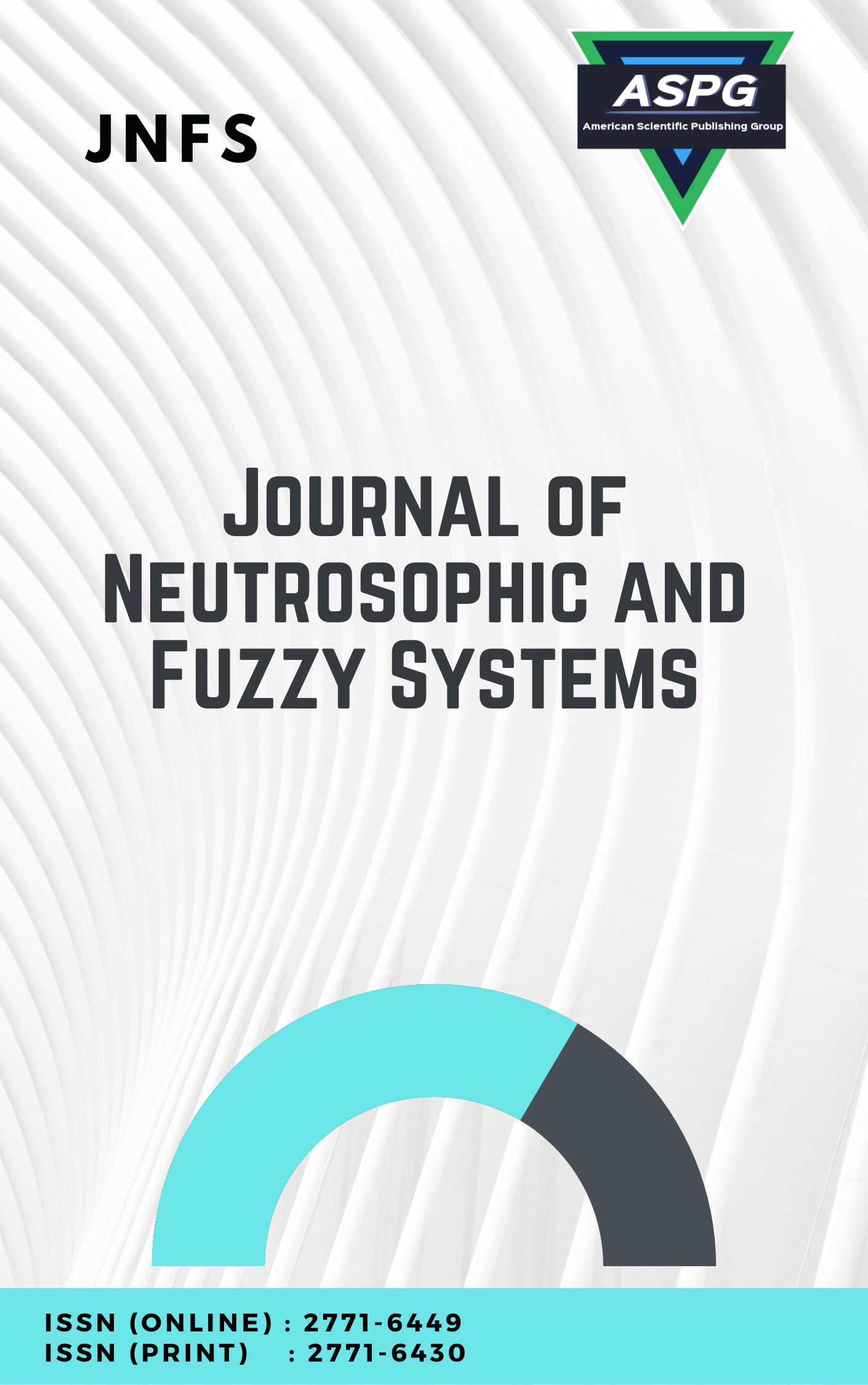

Volume 3 , Issue 1 , PP: 39-53, 2022 | Cite this article as | XML | Html | PDF | Full Length Article
Prem Kumar Singh 1 *
Doi: https://doi.org/10.54216/JNFS.030105
There are several mathematical theorem and other equation which is used frequently. However many researchers or scholar unable to prove them mathematically. One of the famous example is Pythagrous theorem, Budhayana, Pingala, Fibonacci series or even (a+b)2=a2+b2+2ab. It is indeed requirement to understand the basic proof of thiese mathematical theorem and its contradictory. This paper tried to provide some basic proof for these famous theorem and its relations with existing approaches for various applications.
Geometry , Knowledge representation , , Theorerm , Proof , Mathematics. , ,
[1] Singh PK, The consistency measurement in document publications and citation using t-index, Journal of Applied Mathematics and Physics, Vol. 10, pp. 1000-1011, April 2022, DOI: 10.4236/jamp.2022.103067
[2] Singh PK, t-index: Entropy based random document and citation analysis using average h-index. Scientrometrics, Springer, January 2022, Volume 127 , pp. 637-660
[3] Kulkarni, R.P. (1971). Geometry as known to the people of Indus civilisation, Indian Journal of History of Science, 13, pp. 117–24.
[4] Birkhoff G.D., “A Set of Postulates for Plane Geometry (Based on Scale and Protractors)”. Annals of Mathematics, Vol. 33, 1932.
[5] Russell B., “Introduction: An essay on the foundations of geometry”. Cambridge University Press, 1897.
[6] Singh PK, “Data with Non-Euclidean Geometry and its Characterization”. Journal of Artificial Intelligence and Technology, Jan 2022, Volume 2, Issue 1, pp. 3-8, doi : 10.37965/jait.2021.12001
[7] Lobachevsky N., “Pangeometry, Translator and Editor: A. Papadopoulos. Heritage of European Mathematics Series". European Mathematical Society, Vol. 4, 2010.
[8] Singh P.K., “Turiyam set a fourth dimension data representation. Journal of Applied Mathematics and Physics, Vol. 9, Issue 7, pp. 1821-1828, 2021, DOI: 10.4236/jamp.2021.97116
[9] Whitehead, Whitehead, Alfred North and Bertrand Russell (1963). Principia Mathematica. Cambridge: Cambridge University Press. pp. 1
[10] Joseph GG, Indian Mathematics: Engaging with the World from Ancient to Modern Times, 2016, ISBN-10 : 1786340615
[11] Raju CK. (2007). Cultural Foundations of Mathematics: The nature of mathematical proof and the transmission of the calculus from India to Europe in the 16th c. CE. Pearson Longman. ISBN 978-81-317-0871-2.
[12] Ayyangar, K. (1938). The earliest solution of the biquadratic, Current Science, 7(4).
[13] Bressoud, D. (2002). Was calculus invented in India? The College Mathematics Journal, 33(1), pp. 2–13.
[14] Datta, B. and Singh, A.N. (1938). History of Hindu Mathematics, Vol. 2: Algebra, Lahore; Reprint 1962, Asia Publishing House, Mumbai.
[15] Datta, B. and Singh, A.N. (1983). Hindu trigonometry, revised by K.S. Shukla, Indian Journal of History of Science, 18(1), pp. 39–108.
[16] Sen, S.N. and Bag, A.K. (1983). The Sulbasutras, Indian National Science Academy, New Delhi.
[17] Datta, B. (1927). Early history of the arithmetic of zero and infinity in India, Bulletin of the Calcutta Mathematical Society, 18, pp. 165–176. Datta, B. (1932). The Science of the Sulbas. A Study in Early Hindu Geometry, Calcutta University Press, Calcutta.
[18] Gironi, F. (2012). Sunyata and the zeroing of being: a reworking of empty concepts. Journal of Indian History and Philosophy, 15, pp. 1–42.
[19] Briggs, R. (1985). Knowledge representation in sanskrit and artificial intelligence, AI Magazine, 6, pp. 22–38.
[20] Burgess, E. (1860). The Surya Siddhanta: A Text-Book Of Hindu Astronomy, Motilal Banarsidass Publishers Private Limited, New Delhi, Reprinted 1997
[21] Burrow, R. (1790). A proof that the Hindoos had the binomial theorem, Asiatik Researches, 2, pp. 487–497.
[22] Hardy, G.H. (1940). Ramanujan: Twelve Lectures on Subjects Suggested by His Life and Work, Cambridgr University Press, Cambridge. Hayashi, T. (1995). The Bakhshali Manuscript: An Ancient Indian Mathematical Treatise, Egbert Forsten, Groningen
[23] Henderson, D.W. (2000). Square roots in the Sulba Sutra, In C.A. Gorini (ed.) Geometry at Work: Papers in Applied Geometry, MAA Notes Number 53, pp. 39–45.
[24] Jesseph, D.M. (1999). Squaring the Circle: The War Between Hobbes And Wallis, University of Chicago Press, Chicago
[25] Mallayya, V.M. (2004). An interesting algorithm for computation of sine tables of sine tables from the Golasara of Nilakantha, Ganita Bharati, 26, pp. 40–55.
[26] Playfair, J.J. (1789). Remarks on the astronomy of the brahmins, Transactions of the Royal Society of Edinburgh, 2, Part 1, pp. 135–192
[27] Rajagopal, C.T. and Aiyar, T.V.V. (1951). On the Hindu Proof of Gregory’s Series, Scripta Mathematica, 17, pp. 65–74.
[28] Rosenfeld, B.A. (1990). Al-Khw¯arizm¯ı and Indian Science, In W.H. Abdi et al. (ed.) Interaction between Indian and Central Asian Science and Technology in Medieval Times, Indian National Science Academy, New Delhi, Vol. I, pp. 132–139.
[29] Tavernier, J.-B. (1889). Travels in India, Vol. 2, English Translation, Cambridge University Press, Cambridge.
[30] Warren, J. (1825). Kalasankalita: A Collection of Memoirs on the Various Modes According to which the Nations of the Southern Parts of India Divide Time, Madras